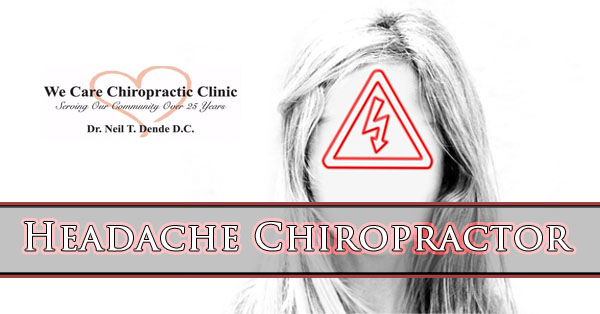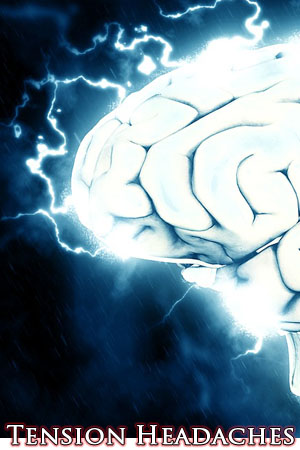
If you are searching for “Headache Chiropractor Glendale AZ” you are probably one of the many Arizona residents that are suffering from frequent intense headaches. This pain can distract us from the joys of life and make simple tasks challenging. We offer headache chiropractor services in Glendale AZ to help alleviate these pains and help improve the quality of life for all of our patients.
Many people will tell you that a tension headache is like having a tight band or dull ache around their heads and behind the eyes. The most common cause for a tension headache is subluxations in the neck and upper back which is treated with chiropractic adjustments.
Headaches will affect just about everyone at some point in time and they may present themselves in various ways. Some will only experience pain either behind their eyes or in one part of their heads, while others may have a pounding sensation around the whole head; some may even experience nausea when some don’t. The pain can be sharp or dull and could last just a few minutes to days. Luckily, very few headaches have any serious underlying causes but for those that do, will need urgent medical care.
Chiropractic adjustments for various types of headaches
There have been may research studies that have shown that adjustments are good for treating headaches, especially ones that start near the neck.
A report that was released by Duke University Evidence Based Practice Center in 2001, found that spinal manipulations resulted in immediate improvement for those who have headaches that start in the neck, and had fewer side effects and long lasting relief of tension headaches than a prescribed medication. These findings were supporting a study that was published that stated that spinal adjustments are quite effective for treating tension headaches. The study found that people who getting treatment after 4 weeks have a sustained benefit when compared to those who had pain medication.
Each person’s case was different and will require a full evaluation before the right course of action for chiropractic care can be found. Although, in many cases of tension headaches, great improvement was found through manipulating the upper cervical vertebrae, when added with adjustments to the area between the thoracic and cervical spine. This is quite helpful in many cases of migraine headaches, as long as lifestyle and food triggers are avoided.
Headache Information
Even though headaches may be due to a variety of causes like temporomandibular joint dysfunction or TMJ, drug reactions, low blood sugar, stress, fatigue, tightness in the neck muscles, and high blood pressure, most recurrent headaches are two types: migraine headaches and tension headaches also known as cervicogenic headaches. There is a third less common type of headache called the cluster headache that is similar to the migraine.


Tension Headaches
Tension headaches are a very common which affect around 75% of all headache sufferers. Many people have described tension headaches as an achy, dull feeling on either side of the head or both sides of the head, which is often described as feeling of a dull ache around the head or behind the eyes. These headaches normally start slowly and will gradually get worse and last for minutes or days, and will normally start in the middle or towards the end of the day. Tension headaches are normally caused by stress or bad posture, which stresses your muscles and spine of the upper neck and back.
Tension headaches will last from around minutes to days. There are some cases where a tension headache may continue for months. Although at times, the pain can be quite severe, they are normally not associated with any other symptoms like throbbing, vomiting, or nausea.
The most common cause of a tension headache is subluxations in the neck and upper back, especially in the upper neck, usually with a combination of active trigger points. Whenever the top of the cervical vertebrae will lose normal motion or position, and a small muscle called the rectus capitis posterior minor or RCPM muscle will begin to spasm. The problem is that the small muscle has a tendon that will slip between the base of the skull and upper neck and attaches to the dura mater or pain sensitive tissue that covers the brain. Even though the brain has no feeling, the dura mater is very sensitive. When the RCPM muscle begins to spasm, and the tendon tugs on the dura mater, you get a headache. People who have desk jobs often suffer from headaches because of this.
Another type of cause for tension headaches comes from the trigger points for pain from the SCM or Sternocleidomastoid or levator muscle in the side of the neck. These tend to be more common for people who have whiplash injury due to muscle damage in the neck area.
Migraine Headaches
Every year, around 25 million people in the United States will have a migraine headache and around 75% are women. Migraines are pretty intense and throbbing headaches that come with light or noise sensitivity and nausea. They may last only a few hours to several days. Most of those who have migraines will experience a visual symptom called aura before they have an attack which is described to seeing flashing lights or it has a hazy dreamlike appearance.
Migraine sufferers normally have their first attack before they turn 30 and will tend to run in families, which supports the notion that there may be a genetic component for them. Some people have attacks several times during the month while others have maybe one a year. Many people have found that migraine attacks happen less frequently and becomes less severe as a person ages.
Migraine headaches are caused by constriction of the blood vessels in the brain, followed by blood vessel dilation. During the constriction of the blood vessels there will be a decrease in blood flow which causes the visual symptoms that people have. Even for people who don’t have the classic migraine aura, many can tell that an attack is going to happen. Once the blood vessels dilate, there will be an increase in blood pressure inside of the head. It is this pressure that causes the pounding headaches. Each time that the heart beats, it will send a shock wave through carotid arteries within the neck and up to the brain.
There are many theories about why the blood vessels that constrict within the first place, but it is unknown for sure. What we do know is that there are a variety of things that may trigger migraines like stress, strong odors, lack of sleep, flickering lights, several foods, and changing weather patterns; especially food that are high in amino acids called tyramine. You may reduce the likelihood of migraines by making lifestyle changes.
Schedule Headache Chiropractic Treatment
At We Care Chiropractic Clinic in Glendale AZ we treat the chiropractic causes of the various types of headaches along with a wide variety of other pain disorders. There are various reasons that patients can feel discomfort, pain, and tension that leads to aches and headaches. We sincerely care and strive to provide relief from pain and a path toward better overall wellness. To schedule your appointment simply call 623-825-4444.